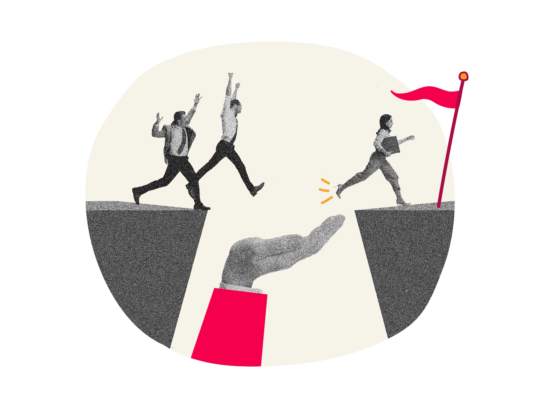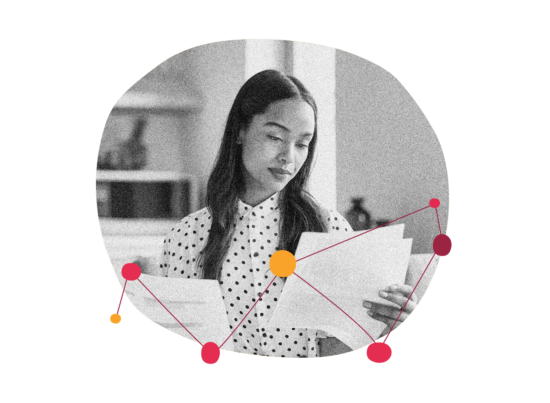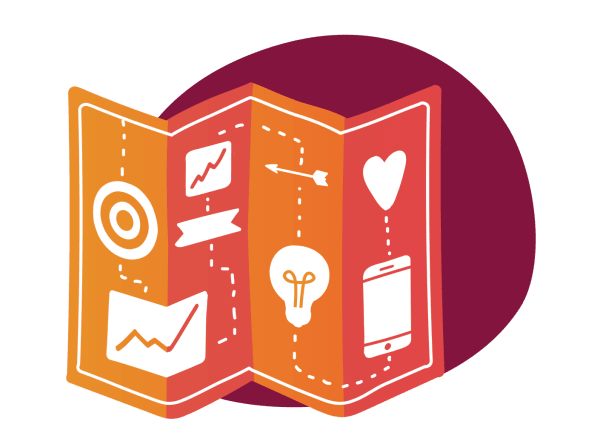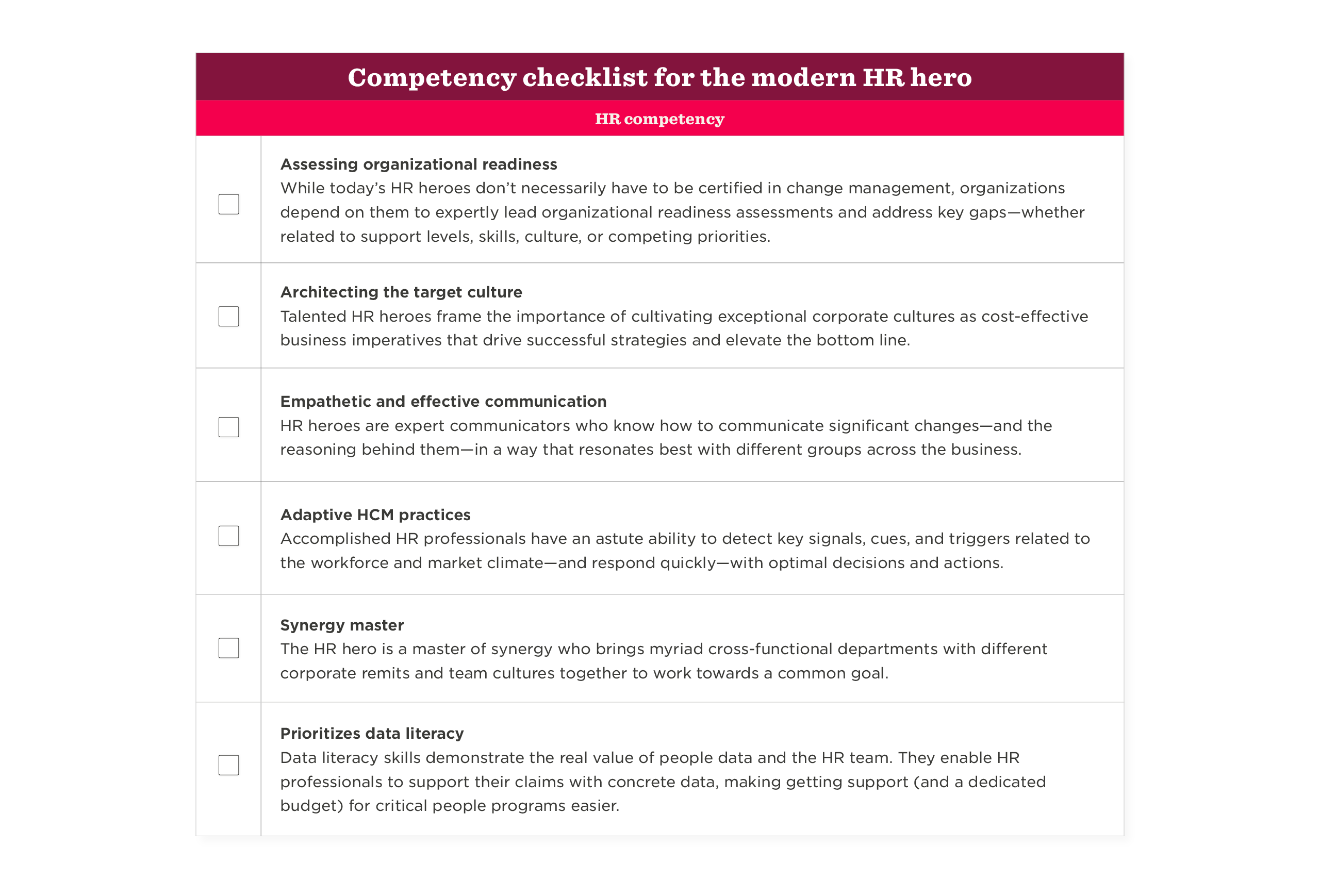Written by Steve Goldberg, HR Tech Advisory Services & 3Sixty Insights
Modern organizations’ typical operating context
Unpredictability and volatility are relative concepts, but the landscape of a pandemic has given these terms a tangible depth and taken uncertainty to a new level—particularly in the workplace. We can view this level as a period of maximum fluidity.
As it relates to HR concerns and the Human Capital Management (HCM) domain, the foundation of unpredictability established by the COVID pandemic has made people look for more agency in their careers. They’ve also started to place a greater emphasis on their total wellbeing, even to the point of the phrase “quiet quitting” taking hold.
Today’s professionals are also reconstituting their career goals and related expectations. In many cases, colleagues, HR departments, or even managers may be unable to predict people’s goals.
<<Download your free HR competencies checklist to up your HR game.>>
In a fascinating set of findings from Mercer’s Voice Of the CHRO Study: Evolving the CHRO Role in a Rapidly Changing World, C-level HR leaders stated that the top two things they wish they’d known when they started out were:
- Greater depth in HR data analytics and insights
- Greater depth in non-HR topics (e.g., finance, operations)
What do you wish you had known when you were starting as a CHRO/Chief People Officer?
(Note: Respondents were allowed to select multiple responses, so total responses exceed 100%)

Overlay this scenario with three dimensions that characterize the typical modern organization’s operating environment:
- Elevating organizational agility becomes a business imperative
- Leveraging AI and GenAI for better HCM outcomes
- Culture and core values take center stage
When organizations incorporate these new HR dimensions into their business strategy, they usually enjoy above-average success rates.

Three new dimensions propelling modern businesses to success
1. Elevating organizational agility becomes a business imperative
The first of these three dimensions emanates from the comments above about less predictable operating environments. It also applies to business plan revisions as priorities tend to change much more frequently these days.
These revisions are often byproducts of strategic and operational pivots organizations need to remain or become more competitive. While all business leaders today must be astute about the drivers of organizational agility, it is arguably the primary domain of today’s HR executive.
2. Leveraging AI and Gen AI for better HCM outcomes
The second theme relates to how technological innovation now dominates our thought processes and business priorities more than ever before. New toolsets and emerging software categories designed for enterprises are often powered by the seemingly ubiquitous AI—or more context-specific Gen AI—coupled with large learning models.
However, innovations also extend beyond technology-centric ones to next-generation practices related to recruiting, compensation, learning, performance management, workforce management, and even payroll.
3. Culture and core values take center stage
Today, corporate culture and underlying values are much more than words in a handbook for our most successful businesses. To truly express what most people value around the globe—trust, honesty, open or transparent communications, and personal integrity—an organization must demonstrate its culture and values every day and reinforce them through coaching, training, recognition, and rewards.
Taking these various dynamics as a whole, we can make a strong case that elevating organizational agility has become today’s universal business imperative. Business entities that excel in anticipating when to operationally or strategically pivot, choosing the optimal path, and executing plans well have a clear competitive advantage. Organizations can sustain these advantages as long as they account for key “org agility dependencies” (essentially, org agility blueprints) and proactively manage them.
Moreover, the inherent value of such a blueprint increases rapidly for organizations dealing with significant (possibly game-changing) events such as business or digital transformations, entering new verticals or geo markets, M&As, or corporate restructurings.

People as organizations’ top competitive advantage
Regarding the above-cited competitive advantages, it is logical to assert that an organization’s people are the key to elevating organizational agility. People are also the source of modern businesses’ sustainable competitive advantages.
In fact, over the course of my four-decade career in the field of HR and HR tech, I’ve developed a “thumbnail definition” of Human Capital Management or HCM: It is the collective set of practices, processes, and technologies an organization puts in place to empower its workforce toward realizing its competitive advantage.
We can also see clear distinctions between organizations that thrive and those that fall behind depending on the role HR plays. Successful organizations empower HR to take point. As pivotal organizational leaders, HR professionals serve as critical architects and owners of the business strategy needed to navigate the journey through periods of significant change.
This guide from HiBob will focus on the competencies and practical skills HR practitioners need to thrive in a world of evolving employee and customer expectations—and a wide range of other business challenges—to come out ahead and avoid burning out. It includes a checklist and examples of the key competencies that can help today’s HR pros up their professional game.
<<Download your free HR competencies checklist to up your HR game.>>
Some industry research findings on org agility
Let’s briefly revisit the theme of organizational agility, as several of the competencies showcased directly relate to it. In doing so, I’ll highlight some of the most relevant research findings to provide a representative sample.
- A PwC survey found that executive leaders today consider hiring and retaining talent, digital innovation, and improving organizational agility their top three priorities.
- Project Management Institute (PMI) and Forbes Insights found that 92 percent of C-level executives believe organizational agility is critical to business success, yet only 27 percent consider themselves highly agile.
- Research by Accenture found that “truly agile firms are more than twice as likely as the [average organization] to achieve top-quartile financial performance (55 percent versus 25 percent).”
- Harvard Business Review reported that nearly half of employees regularly feel pressure to conform in their organization. More than 50 percent reported that “people in their organization do not question the status quo.”
- CEO World reported that “being learning agile is a key predictor of success and a critical attribute of effective breakthrough leadership—above intelligence, education level, or even leadership. Yet only 15 percent of executives possess this trait.”
- According to Human Resource Certification Institute, only 43 percent of HR professionals surveyed reported that “their organizations can ‘quickly turn challenges into opportunities.” Additionally, 31 percent reported that “their organizations have ‘a learning and development strategy that helps leaders at all levels to be more agile.’”
Lastly, industry research shows that agility is critical for any organization going through significant change. But, according to McKinsey, 70 percent of transformations also fail due to factors ranging from unrealistic aspirations and lack of employee engagement to insufficient investment in building capabilities across the organization to sustain the post-initiative change.
So, let’s transition to showcasing a set of competencies HR professionals and leaders can leverage to stave off the concerning trends highlighted above. In the next section, we’ll explore how to turn these challenges into opportunities to capture competitive advantage.

6 essential competencies for the modern HR hero
HR professionals must continuously upskill their repertoire to stay on top of their game and expertly lead their organization through market changes. Given the fast pace and unpredictability of the modern business world, it’s increasingly important for HR professionals to develop a range of competencies to enhance their agility.
To help achieve this, I’ve composed a checklist of six essential HR competencies to help identify and master the skills needed to thrive in today’s organizational landscape.
Assessing organizational readiness
While today’s HR heroes don’t necessarily have to be certified in change management, organizations depend on them to expertly lead organizational readiness assessments and address key gaps—whether related to support levels, skills, culture, or simply navigating competing corporate priorities.
One change management tool or framework I’ve personally put to good use when leading change efforts within large organizations is the Ready, Willing, and Able (RWA) model from Boston Consulting Group (BCG). It provides a clear and concise method HR professionals can follow to gauge their organization’s level of adaptability—and improve their organizational readiness skills.
- Ready: Employees and managers understand the (net) benefits of the change program to themselves, their colleagues, and the organization as a whole.
- Willing: Employees and managers are prepared to commit to the change(s) and do what is needed to support those changes.
- Able: Employees and managers believe they possess the skills and knowledge to support the change and play a key part in seeing them through.
2. Architect of the target culture
Today’s HR heroes are skilled at identifying any gaps in the workforce’s skill sets and competencies—and at implementing effective solutions to mitigate them. They also excel at establishing a common vision for the company culture that business leaders can stand behind. Most importantly, they can clearly articulate why exceptional cultures are critical to the business’s success.
Of course, building exceptional company cultures starts with HR and their ability to attract and retain top talent. Experienced HR professionals know how to present initiatives that focus on building a healthy work environment and prioritizing employee wellbeing when they receive pushback and strong objections from other high-level business decision-makers.
Talented HR heroes frame the importance of cultivating exceptional corporate cultures as cost-effective business imperatives that drive successful strategies and elevate the bottom line.
3. Empathetic and effective communication
HR heroes understand the importance of continuous communication and double down on it during times of change.
The ability and personal qualities needed to empathetically and effectively communicate are closely tied to organizational readiness. Both are crucial to successfully executing a change management lifecycle program, especially because people often become anxious when they learn about impending changes at work. This may cause some instability and affect morale. However, HR heroes have the expertise to reassure and instill confidence in employees.
Transparency is paramount, especially during times of upheaval. HR heroes also know that conveying the “why” behind certain actions is vital: Why are specific actions being taken (or not)? What is their impact on each affected group? HR heroes are expert communicators who know how to communicate these changes—and the reasoning behind them—in a way that resonates best with different groups across the business.
4. Adaptive HCM practices
Adaptive HCM is a concept I originated that refers to the ability to detect key signals, cues, and triggers related to the workforce—and respond quickly with optimal decisions and actions.
Such triggers often prompt decision-makers to update their business plans and priorities. They also tend to have major implications across the spectrum of HCM processes and activities.
For example, changes in business plans and priorities have significant ripple effects across the organization: Hiring volumes and learning and development priorities get recalibrated to align with skills becoming more (or less) important and relevant.
Businesses may retrofit their corresponding budgets, compensation packages, and total rewards practices to align with new market positioning decisions (e.g., when a business shifts from aiming to be a market leader to being a follower from a job-pricing perspective).
5. Synergy master
The HR hero is a master of seeing and promoting opportunities for synergy across the organization—and bringing cross-functional departments with different corporate remits and team cultures together to work towards a common goal.
Organizations function best when people in different departments work well together. And HR heroes are the masters of making organizations greater than the sum of their often-siloed corporate functions. To achieve this, they must focus on several key areas: culture, skills, organizational and job design, coaching, and data insights.
6. Prioritizes data literacy
Data literacy empowers HR heroes to leverage people data to drive positive change and innovation in the workplace.
Data literacy skills demonstrate the real value of people data and the HR team. They enable HR professionals to support their claims with concrete data, making getting support (and a dedicated budget) for critical people programs easier.
Beyond simply accessing data, HR heroes can gain valuable insights from people data and use it to drive strategic decision-making, cementing their role as key stakeholders in the business.
<<Download your free HR competencies checklist to up your HR game.>>
Apply HR competencies every day
These six HR competencies are critically relevant for every modern HR professional and leader—every day of the week. They provide you with the fundamental skills you need to excel professionally and propel your organizations forward in today’s world of fast and unrelenting change.
Throughout my decades of advisory work with HR and HCM solution execs, I’ve found that the three dimensions I spoke about at the beginning of this guide are constant, no matter the state of the global economy and market. Elevating organizational agility, prioritizing culture and core values, and proficiency in leveraging AI and Gen AI for better HCM outcomes are all paramount to mastering the broad-based business acumen today’s HR heroes need. Use the six HR competencies to drive your businesses to success.

Recommended For Further Reading
About the author
Steve Goldberg’s 30+ year career on all sides of HR technology and processes includes HR exec roles on three continents, serving as HCM product strategy leader at PeopleSoft, and collaborating closely with HR Tech analyst and advisory firm, 3Sixty Insights.
He’s also founded boutique recruiting tech and change management firms and served as practice leader at Bersin and Ventana Research. He holds an MBA in HR, is widely published, and is recognized as a Top 100 HR Tech Influencer.
When he’s not working, Steve loves playing jazz and blues piano and is proud of his volunteer work giving talks in state prisons.
About 3Sixty Insights
The buying cycle for enterprise software and technology shouldn’t be a power struggle between departments.
3Sixty Insights is a research, advisory, and consulting firm providing a deep understanding of how to bridge the gap in perception and priorities between stakeholders.
Through our research, we unearth strategic approaches for streamlining the decision-making process, successfully managing solutions, and maximizing value from business software and technology investments.

